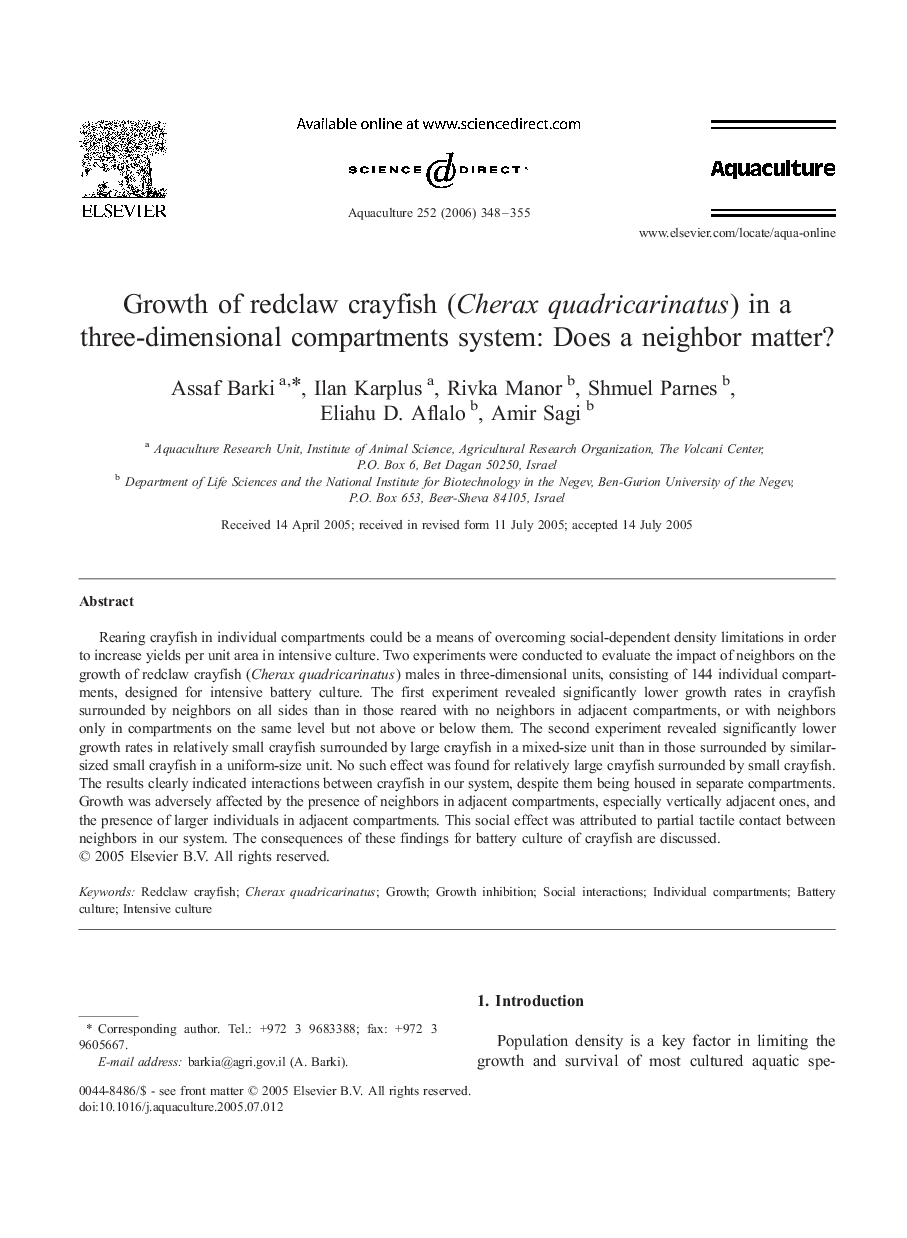| Article ID | Journal | Published Year | Pages | File Type |
|---|---|---|---|---|
| 2426166 | Aquaculture | 2006 | 8 Pages |
Rearing crayfish in individual compartments could be a means of overcoming social-dependent density limitations in order to increase yields per unit area in intensive culture. Two experiments were conducted to evaluate the impact of neighbors on the growth of redclaw crayfish (Cherax quadricarinatus) males in three-dimensional units, consisting of 144 individual compartments, designed for intensive battery culture. The first experiment revealed significantly lower growth rates in crayfish surrounded by neighbors on all sides than in those reared with no neighbors in adjacent compartments, or with neighbors only in compartments on the same level but not above or below them. The second experiment revealed significantly lower growth rates in relatively small crayfish surrounded by large crayfish in a mixed-size unit than in those surrounded by similar-sized small crayfish in a uniform-size unit. No such effect was found for relatively large crayfish surrounded by small crayfish. The results clearly indicated interactions between crayfish in our system, despite them being housed in separate compartments. Growth was adversely affected by the presence of neighbors in adjacent compartments, especially vertically adjacent ones, and the presence of larger individuals in adjacent compartments. This social effect was attributed to partial tactile contact between neighbors in our system. The consequences of these findings for battery culture of crayfish are discussed.
